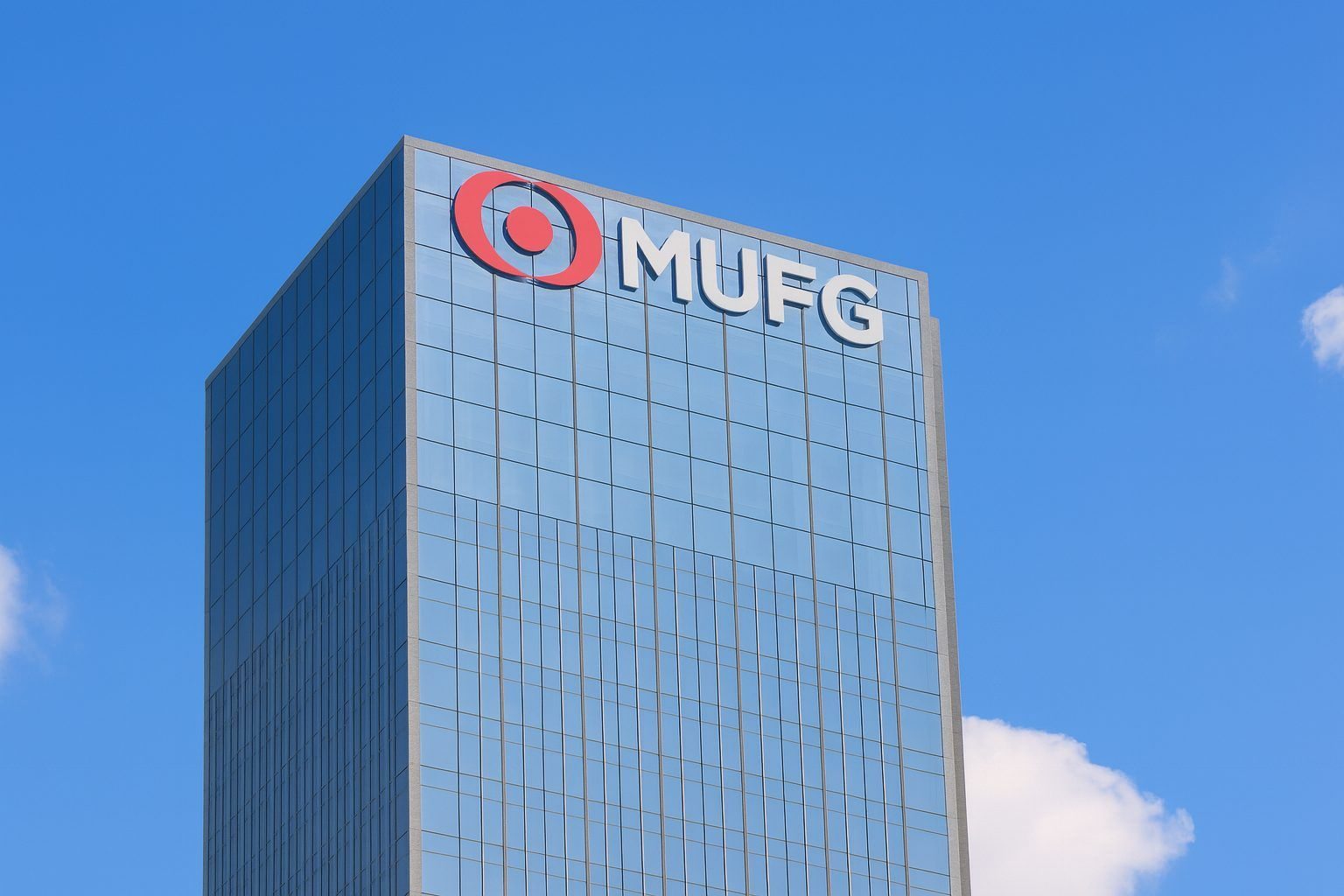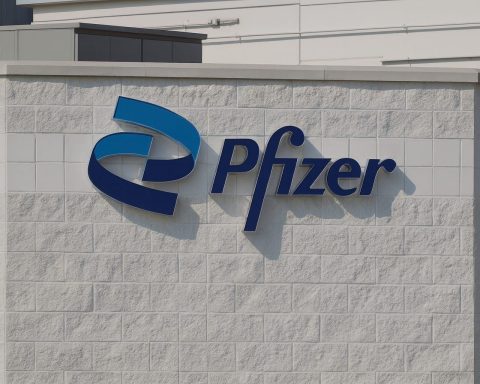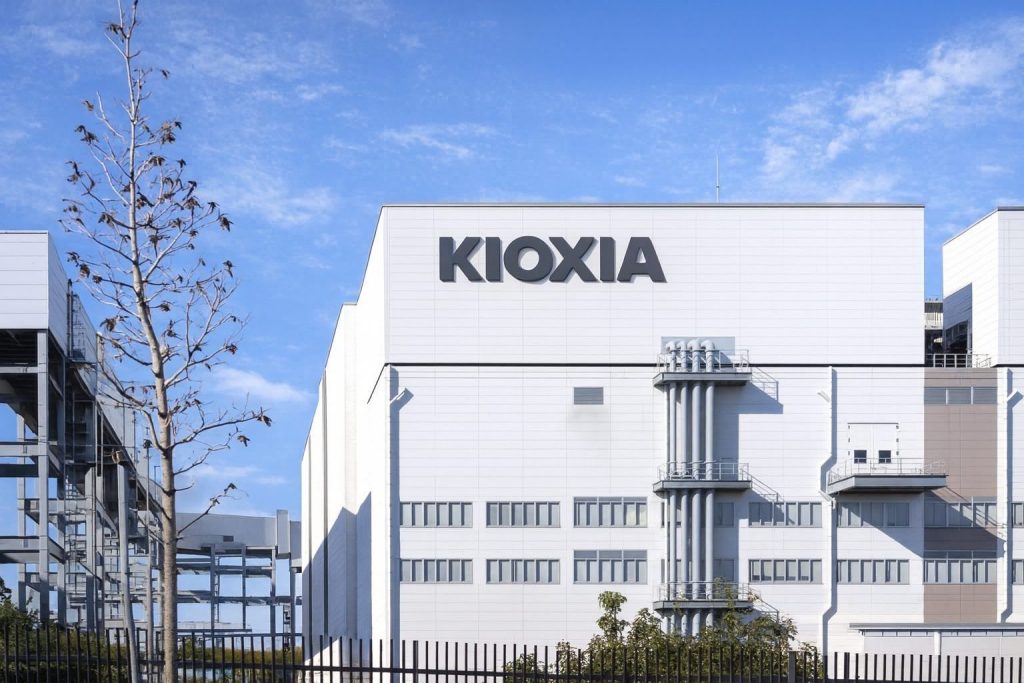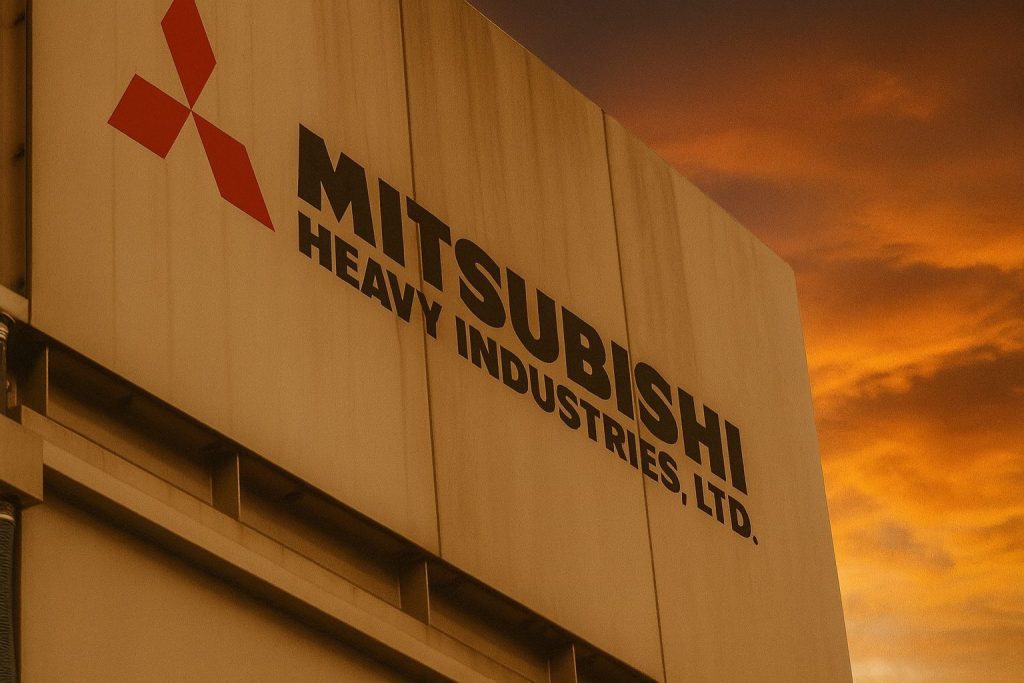TOKYO / NEW YORK – Mitsubishi UFJ Financial Group, Inc. (MUFG, TSE: 8306, NYSE: MUFG) is trading close to record levels today, 27 November 2025, supported by a fresh AA credit rating affirmation, an aggressive share buyback and a new Southeast Asian financing deal that underscores the Japanese megabank’s regional growth ambitions. At the same time, markets are watching the Bank of Japan’s increasingly hawkish tone, which could further reshape MUFG’s earnings profile over the coming quarters. [1]
MUFG share price today: Tokyo near record high, US ADR trending higher
On the Tokyo Stock Exchange, MUFG shares traded around ¥2,454 in mid-morning trading on Thursday, up about 0.3% on the day and setting a new year‑to‑date high of ¥2,471.5 earlier in the session. That’s well above the year’s low of ¥1,310 recorded in April, leaving the stock close to doubling from early‑2024 levels. [2]
Key snapshot from Tokyo today:
- Price: ~¥2,454
- Day range: ¥2,445.5 – ¥2,471.5
- 52‑week high: ¥2,471.5 (updated today)
- 52‑week low: ¥1,310 (7 April 2025)
- Market cap: ~¥29.6 trillion
- Forecast dividend: ¥74 per share, implying a yield of about 3.0%
- Price‑to‑book: ~1.34x; ROE around 9.3% [3]
In New York, the MUFG American Depositary Receipt (ADR) last traded at $15.81, up roughly 2% versus the previous close, with around 2.6 million shares changing hands. That puts the ADR not far from its 52‑week high near $16, and implies a trailing price‑to‑earnings multiple in the low‑to‑mid teens (around 14x) based on recent earnings. [4]
After a roughly 90% rally in MUFG’s share price since the start of 2024, compared with about 39% for the TOPIX index, the stock is no longer “cheap” on simple valuation metrics. But today’s news flow suggests investors still see catalysts in stronger capital returns, credit quality and rising domestic interest rates. [5]
Fresh AA credit rating affirmation reinforces balance-sheet strength
The biggest credit-related headline in the last 24 hours came from Japan Credit Rating Agency (JCR). The agency affirmed MUFG’s long‑term issuer rating at “AA” with a Stable outlook, while also affirming ratings on a wide range of senior and subordinated bonds and on key group entities such as MUFG Bank and Mitsubishi UFJ Trust and Banking Corporation. [6]
In its rationale, JCR highlights several themes:
- MUFG’s solid franchise at home and overseas, as Japan’s largest banking group.
- Improved earnings capacity in recent years, supported by fee income and overseas businesses including the strategic stake in Morgan Stanley. [7]
- Sound asset quality and adequate capital, giving the group financial flexibility even as it steps up shareholder returns. [8]
The stable AA rating is important for equity investors because:
- It supports wholesale funding costs and underpins MUFG’s ability to issue subordinated capital instruments at reasonable spreads.
- It signals rating agencies’ confidence that MUFG can absorb cyclical shocks while still executing on its capital return plans.
- It differentiates MUFG from weaker regional or global peers at a time when regulators are particularly sensitive to bank capital and liquidity.
In short, the rating affirmation aligns with the market narrative of MUFG as a relatively conservative, well‑capitalised megabank that still has room to improve returns.
New Southeast Asia deal: MUFG extends MYR 150m facility to Carsome Capital
The headline deal today, 27 November 2025, comes from Southeast Asia. Carsome Capital, the financing arm of Malaysian used‑car marketplace Carsome Group, announced it has secured a 150 million Malaysian ringgit (around $36 million) revolving working capital facility from MUFG Bank (Malaysia) Berhad, a subsidiary of MUFG. [9]
According to statements from Carsome and coverage in regional media:
- The credit line will support lending growth and regional expansion of Carsome Capital’s used‑car financing business.
- The facility also deepens the relationship among Carsome, MUFG and JACCS Co. Ltd, a consumer finance firm in which MUFG is a major shareholder. JACCS acquired a 49% stake in Carsome Capital in April 2025, giving the unit a blend of bank and strategic funding. [10]
For MUFG shareholders, this deal might look small in absolute size, but it matters in three ways:
- Asia consumer & auto‑finance exposure – It adds another recurring, secured retail/SME credit stream in a growth market.
- Cross‑border ecosystem strategy – It shows MUFG’s approach of combining equity stakes (JACCS, Carsome Capital) with balance‑sheet lending.
- Regional branding and deal flow – High‑profile platforms like Carsome can be gateways to broader Southeast Asian deal pipelines in auto, fintech and e‑commerce.
This complements other recent MUFG transactions, including a $750 million credit facility for an aircraft engine leasing joint venture between Willis and Mitsui, and a $75 million revolving facility for US earnings‑access platform EarnIn, both of which highlight MUFG’s growing role in global structured and specialty finance. [11]
Strong first-half results and upgraded guidance underpin the rally
MUFG’s current share price strength rests on a powerful earnings backdrop. On 14 November 2025, the group reported results for the second quarter of the fiscal year ending March 31, 2026, and raised both its full‑year profit and dividend forecasts. [12]
Key numbers:
- Interim (H1) revenue under Japanese GAAP: approx. ¥6.89 trillion, up about 0.5% year‑on‑year. [13]
- Profits attributable to owners of parent: around ¥1.29 trillion, an increase of 2.8% from the prior year period – solid growth considering the already high base. [14]
- Capital ratio ticked up to roughly 5.2%, reflecting retained earnings and stable risk‑weighted assets. [15]
On the same day, MUFG announced an upward revision to its full‑year profit target:
- Previous FY2025/26 profit target: ¥2.0 trillion.
- New target: ¥2.1 trillion (a 5% upgrade).
- The increase is driven by both stronger core customer business and higher equity‑method income, particularly from Morgan Stanley, in which MUFG holds roughly a 24% stake. [16]
Dividend hike: 74 yen for the full year
MUFG also raised its dividend forecast:
- Previous annual dividend forecast: ¥70 per share.
- Revised forecast:¥74 per share, with the year‑end dividend raised from ¥35 to ¥39 per share (on top of a ¥35 interim dividend). [17]
This represents a meaningful step‑up from the prior year’s ¥64 total dividend, and is in line with MUFG’s medium‑term target of a ~40% dividend payout ratio. [18]
At today’s share price around ¥2,450, that ¥74 dividend implies a yield of just over 3%, which remains attractive relative to Japanese government bond yields and many domestic blue‑chips, even after the stock’s strong run. [19]
Aggressive share buyback and cancellation signal confidence
Alongside its earnings upgrade, MUFG unveiled a fresh share repurchase and cancellation program on 14 November:
- Buyback authorisation: up to 130 million shares (about 1.08% of shares outstanding, excluding treasury stock) for a total cost of up to ¥250 billion.
- Buyback period: from 17 November 2025 to 27 February 2026, via market purchases on the Tokyo Stock Exchange.
- Planned cancellation:200 million shares, roughly 1.66% of the total shares outstanding before cancellation, scheduled for 28 November 2025. [20]
Reuters notes that with this latest authorisation, MUFG’s share repurchases for the current financial year will total around ¥500 billion, a record level for the group and the largest in Japan’s banking sector. [21]
Management reiterates that:
- MUFG will flexibly repurchase stock depending on performance, capital and market conditions;
- It does not intend to hold treasury shares above roughly 5% of total shares outstanding and will cancel any excess. [22]
For equity holders, this combination of dividend hikes and sizeable buybacks is a strong signal that MUFG believes its capital position is robust and that its shares remain attractive, even near all‑time highs.
Strategic AI push: additional investment in Sakana AI
Beyond traditional lending and corporate finance, MUFG is increasingly framing itself as a technology‑enabled financial group. On 17 November 2025, MUFG and MUFG Bank announced an additional investment in Tokyo‑based AI R&D firm Sakana AI as part of its Series B funding round, following an initial stake in 2024. The new round is expected to make MUFG Sakana AI’s largest Japanese investor. [23]
Sakana AI has gained attention for advanced research such as:
- Systems that combine multiple AI models to tackle complex problems;
- Self‑improving AI architectures capable of rewriting their own code;
- An “Applied Team” dedicated to turning research into real‑world solutions for corporate partners, including MUFG. [24]
MUFG says the investment supports its medium‑term plan to:
- Build data‑driven management,
- Enhance customer value and productivity through AI, and
- Strengthen Japan’s industrial competitiveness via world‑class AI capabilities. [25]
This AI and digital strategy resonates with investors looking for banks that can defend margins and grow fee income in a world of rapid technological change.
Sector backdrop: Japanese megabanks riding rising rates and corporate demand
MUFG’s story is part of a broader rally in Japan’s “megabanks”:
- Reuters reported earlier this month that MUFG, Sumitomo Mitsui Financial Group (SMFG) and Mizuho Financial Group all raised their profit forecasts to record highs and expanded buybacks following strong second‑quarter earnings. MUFG’s July–September profit rose around 7% year‑on‑year, and the bank announced additional share repurchases that brought its total buyback for the year to approximately ¥500 billion. [26]
- A separate Reuters‑based analysis notes that since early 2024, the shares of MUFG and its peers have been among the best performers on the Tokyo market, reflecting expectations for higher lending margins as Japan exits decades of near‑zero rates. [27]
Credit‑rating commentary from Fitch and S&P, summarised by Asian Banking & Finance, echoes this theme: profitability is expected to improve on the back of gradual domestic rate increases, modest loan growth and stable credit costs, even if capitalisation remains merely “adequate” and overseas expansion introduces additional risk. [28]
Macro driver to watch: BOJ prepares markets for a possible December hike
The biggest macro overhang for Japanese bank stocks right now is the Bank of Japan’s next move. In an exclusive report yesterday, Reuters said the BOJ is preparing markets for a possible interest rate hike as soon as December, as concerns over a sharply weaker yen and firm inflation re‑emerge. [29]
Key points from that report:
- Governor Kazuo Ueda and several policy board members have adopted more hawkish language, emphasising the inflationary impact of a weak yen.
- A Reuters poll shows a slim majority of economists expect a hike at the 18–19 December meeting, with consensus that the policy rate could reach 0.75% by March 2026, up from 0.5% today. [30]
- Political resistance to rate hikes appears to be easing following recent meetings between Ueda, Prime Minister Sanae Takaichi and Finance Minister Satsuki Katayama. [31]
For MUFG, a more normal interest‑rate environment is generally positive for net interest margins, especially on domestic loans and deposits. However, it also:
- Raises funding costs and potential pressure on heavily indebted borrowers;
- Could lead to valuation losses on bond portfolios if yields rise further;
- May slow certain types of interest‑rate‑sensitive asset growth.
Investors will be watching MUFG’s disclosures on interest‑rate sensitivity and bond‑portfolio duration in upcoming presentations to assess how much incremental upside and risk the BOJ’s path really entails. [32]
What today’s news means for MUFG stock
Putting the pieces together, here’s how today’s (and the last few days’) headlines stack up for MUFG shareholders:
Supportive factors
- Near‑record earnings: H1 profits are up, and the full‑year target is now ¥2.1 trillion, implying another record year if achieved. [33]
- Capital return story: A forecast ¥74 dividend, ~3% yield and a ¥250 billion incremental buyback (¥500 billion total this year) offer tangible support to the share price. [34]
- Solid credit profile: The AA / Stable rating affirmation by JCR reinforces confidence in MUFG’s financial resilience. [35]
- Growth initiatives: The Carsome facility and Sakana AI investment showcase MUFG’s push into high‑growth Asian consumer finance and advanced AI, potentially boosting medium‑term earnings and fee income. [36]
- Rate tailwind: A gradual BOJ hiking cycle should support higher lending margins over time, provided credit costs remain controlled. [37]
Risks and constraints
- Valuation stretch: After a ~90% gain since early 2024 and trading at around 1.3x book and mid‑teens P/E, MUFG no longer trades at the steep discounts seen a few years ago; upside now depends more on sustained profit surprises and capital return. [38]
- Capital sensitivity: Ratings agencies still consider capital levels “adequate rather than abundant” for Japanese megabanks, especially given overseas expansion and larger foreign bond portfolios. [39]
- Macro and policy uncertainty: Faster‑than‑expected BOJ hikes, global growth shocks or renewed trade tensions could hit loan demand, bond valuations or credit quality. [40]
Bottom line
As of 27 November 2025, MUFG is trading like what it has become: a global‑scale bank with improving profitability, a stronger capital‑return story and a still‑solid balance sheet, rather than a deep‑value turnaround.
Today’s combination of:
- AA credit rating affirmation,
- New Southeast Asian financing (Carsome Capital),
- Ongoing AI and technology investments, and
- Record‑level dividends and buybacks,
is likely to be viewed positively by long‑term holders, even if some shorter‑term investors question how much good news is already priced in.
For anyone following MUFG stock, the next big catalysts to watch will be:
- The BOJ’s December policy meeting and any move toward 0.75% rates. [41]
- MUFG’s execution on buybacks and the planned share cancellation on 28 November. [42]
- Updated guidance and capital plans at the next results briefing as management digests the new rate environment and global deal pipeline. [43]
References
1. finance.yahoo.co.jp, 2. finance.yahoo.co.jp, 3. finance.yahoo.co.jp, 4. www.gurufocus.com, 5. www.investing.com, 6. www.jcr.co.jp, 7. www.reuters.com, 8. www.jcr.co.jp, 9. technode.global, 10. www.dealstreetasia.com, 11. finance.yahoo.com, 12. finance.yahoo.co.jp, 13. finance.yahoo.co.jp, 14. finance.yahoo.co.jp, 15. finance.yahoo.co.jp, 16. www.mufg.jp, 17. www.mufg.jp, 18. www.mufg.jp, 19. finance.yahoo.co.jp, 20. www.mufg.jp, 21. www.reuters.com, 22. www.mufg.jp, 23. www.mufg.jp, 24. www.mufg.jp, 25. www.mufg.jp, 26. www.reuters.com, 27. www.investing.com, 28. asianbankingandfinance.net, 29. www.reuters.com, 30. www.reuters.com, 31. www.reuters.com, 32. www.mufg.jp, 33. finance.yahoo.co.jp, 34. www.mufg.jp, 35. www.jcr.co.jp, 36. www.dealstreetasia.com, 37. www.reuters.com, 38. finance.yahoo.co.jp, 39. asianbankingandfinance.net, 40. www.reuters.com, 41. www.reuters.com, 42. www.mufg.jp, 43. www.mufg.jp







